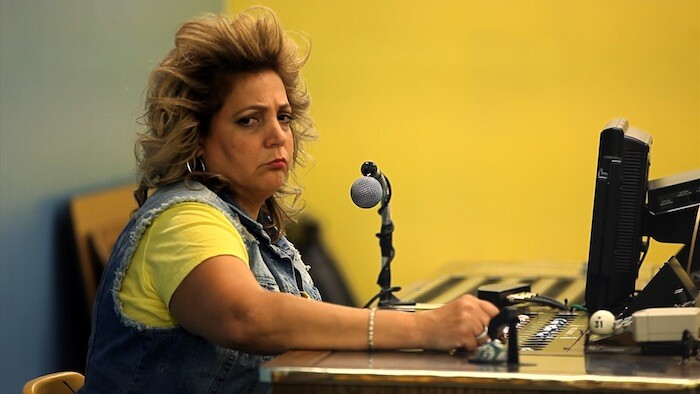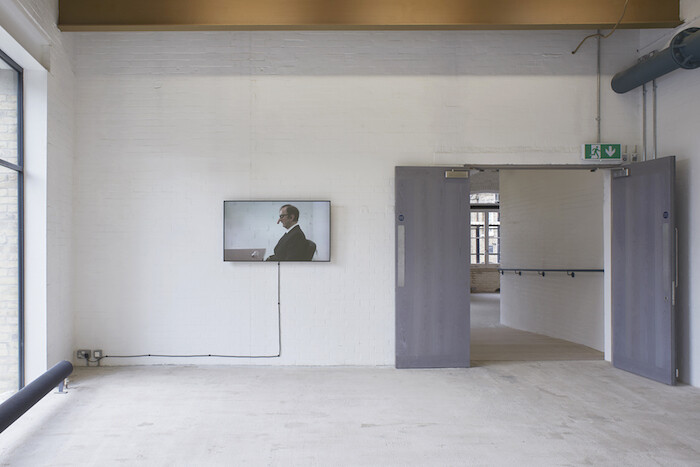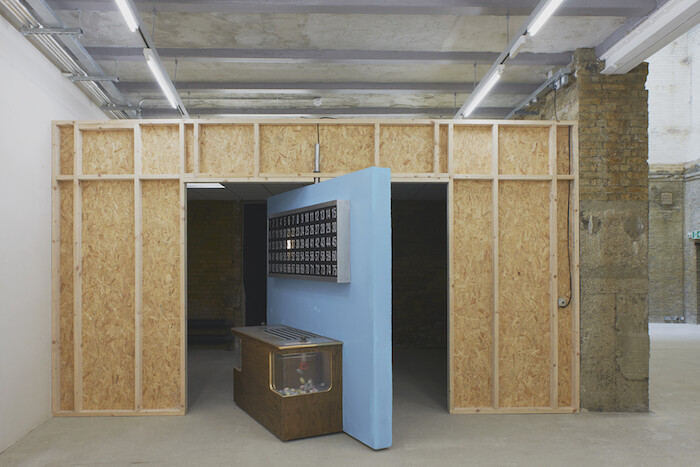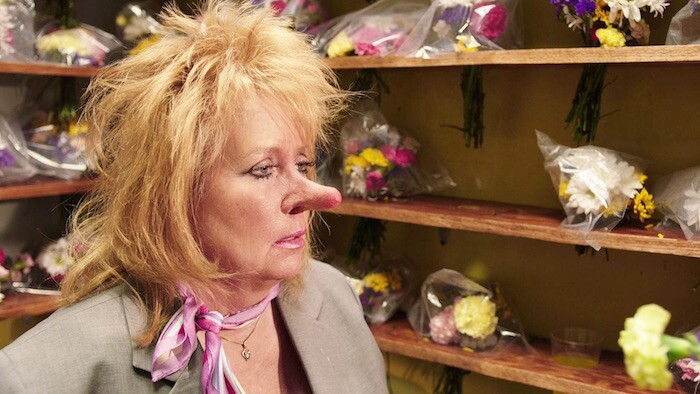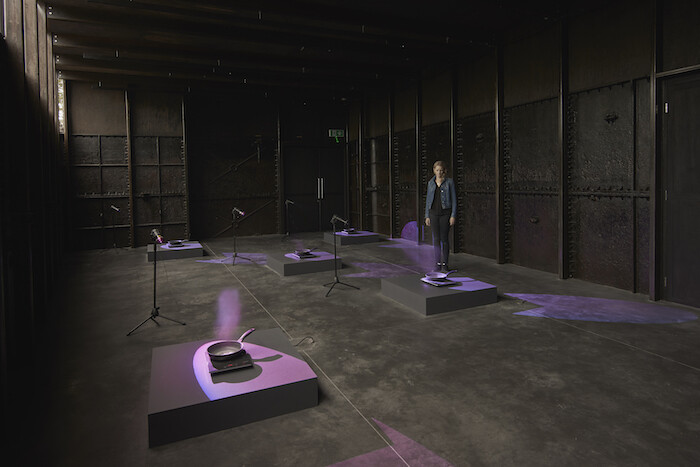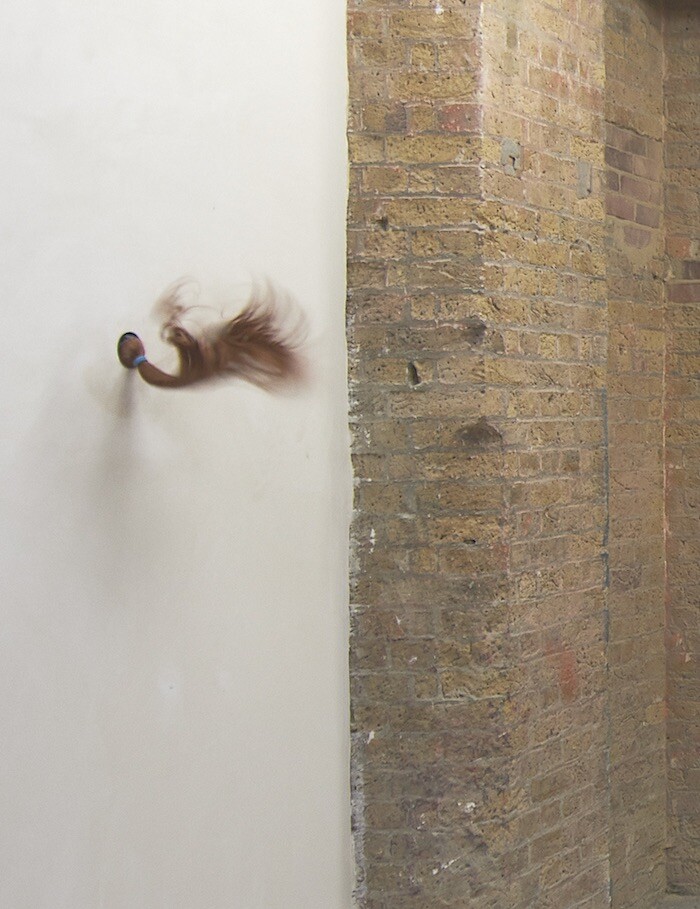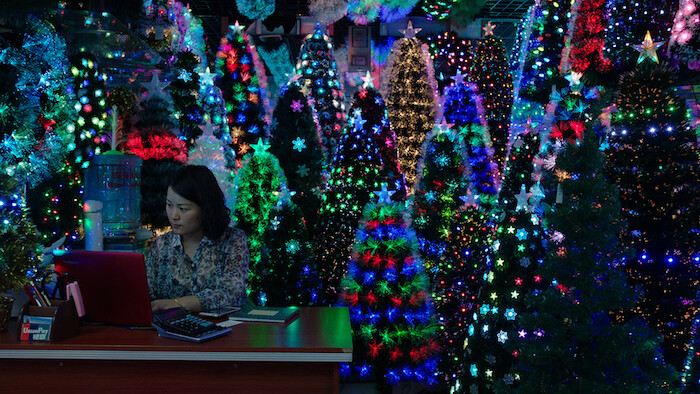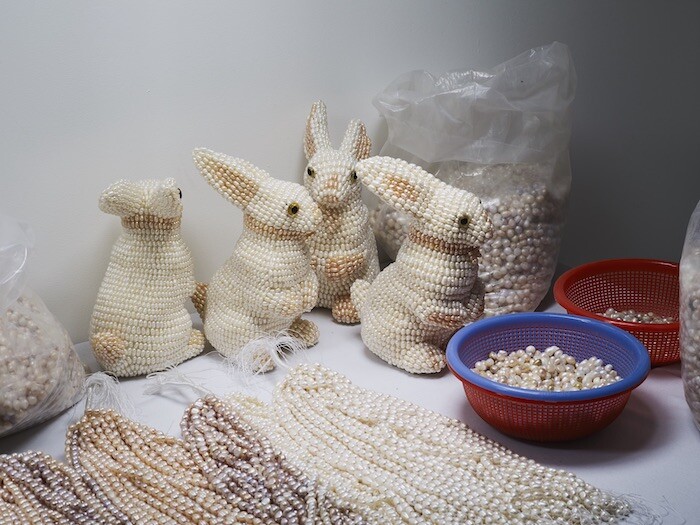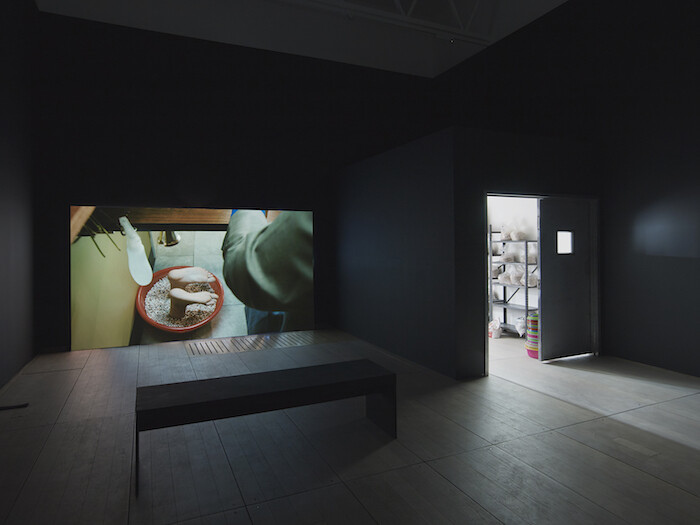Shucking oysters, turning wheels and levers, sitting in a rammed plastic warehouse while staring at a mobile phone—to enter Mika Rottenberg’s universe is to fall down a rabbit hole of stoic drudgery. The worlds the artist conjures in her video installations are populated by extraordinary characters, such as the fantasy wrestlers who pulverize red fingernails into maraschino cherries in the artist’s MFA degree show piece Mary’s Cherries (2004), or the women who produce cultured pearls by turning cranks to power fans which inflate cartoonish noses in NoNoseKnows (2015). They are all committed to odd tasks with resigned zeal, as if there was no escape to their abstruse internal logic. Rottenberg’s works offer piercing critiques of the absurd conditions of labor under neoliberalism: the precariousness of the gig economy has turned millions into impoverished workaholics, and while AI and automation are threatening countless jobs across the globe, presenteeism still reigns supreme in most cubicles and departments. The aroma of lives wasted on futile endeavors might dominate here, but instead of opting for kitchen sink tragedy, Rottenberg plunges into Technicolor farce: grotesque reflections on unhinged times.
Goldsmiths’s new Center for Contemporary Art (CCA), run by curator Sarah McCrory, is opening its doors with a solo exhibition by the New York–based artist. The choice makes perfect sense: with upcoming exhibitions by Alexis Hunter, Kris Lemsalu, and the Chicago Imagists, CCA’s inaugural program foregrounds political topics and leftfield artistic practices—for which Rottenberg’s satirical work sets an apt tone. The gallery’s labyrinthine spaces, devised by the young architectural collective and 2015 Turner Prize–winning architects Assemble, offer plenty of nooks to accommodate the seven video installations and three sculptural installations that form this exhibition. Moreover, the DIY quality of the refurbishment and the use of low-cost materials, such as corrugated iron and concrete, are an ideal match for the makeshift qualities of Rottenberg’s installations.
This survey offers a lesson in artistic consistency, as dogged as the determination of Rottenberg’s own protagonists. Shown in the first gallery, Mary’s Cherries boasts many of her hallmarks: a video displayed in a custom-made sculpture featuring a group of (mostly female) workers and a sound design as jarring as musique concrète. In this early piece, we see a woman growing her garish fuchsia nails with supernatural speed, aided by a lamp powered by the pedaling of another woman in a room below. Once the nails reach a certain length, they are cut painfully short, and transformed into maraschino cherries through a rite of rather icky alchemy.
Nearby, Sneeze (2012) is one of the few works to feature an all-male cast. In it, a parade of dreary office types—painted toenails and massive red noses notwithstanding—sneeze painfully and relentlessly, each sternutation producing not snot but a series of fluffy bunnies, bulbs, and thick cuts of meat. On the first floor, the video installation NoNoseKnows features more food-generating sneezes, in this case endless plates of Chinese grub abandoned on top of each other. The show also features some of Rottenberg’s recent kinetic sculptures, like the bouncing Ponytail (Orange #1) and the rotating middle Finger (both 2018), disembodied body parts protruding from walls that point toward a growing interest in sculpture sans video. One massive room, for example, is taken by the installation Frying Pans (2018), in which a cluster of saucepans, placed on piping-hot plates and lit by purple spotlights, sizzle when they receive water squirted from the ceiling at intervals (how this piece passed Britain’s strict health and safety regulations is another question).
Coming back to her moving image works, I found Cosmic Generator (Variant 4) (2017–18), commissioned for the 2017 edition of Skulptur Projekte Münster, particularly moving and rich in associations. The video connects the border between Mexico and the US with a plastic commodity market in China through a cavernous tunnel traversed by a cast of motley characters, one of them looking like Donald Trump. Images of piles of plastic items such as toys, flowers, and inflatables are interspersed, almost subliminally, with footage of water—fountains, sprinklers attempting to moisten the arid Mexican landscape, even a kitsch drawing of lush waterfalls in a Chinese restaurant. This work is ostensibly an inquiry about the transit of people and goods across the globe, some impeded and some expedited; yet my thoughts while watching it kept returning to those nightmarish images of plastic-filled oceans, water and plastic juxtaposed in the most catastrophic of ways. It was a bleak reminder that, in neoliberalism’s pursuit of endless economic growth, a lot more is at stake beside the alienated lives of laborers.
